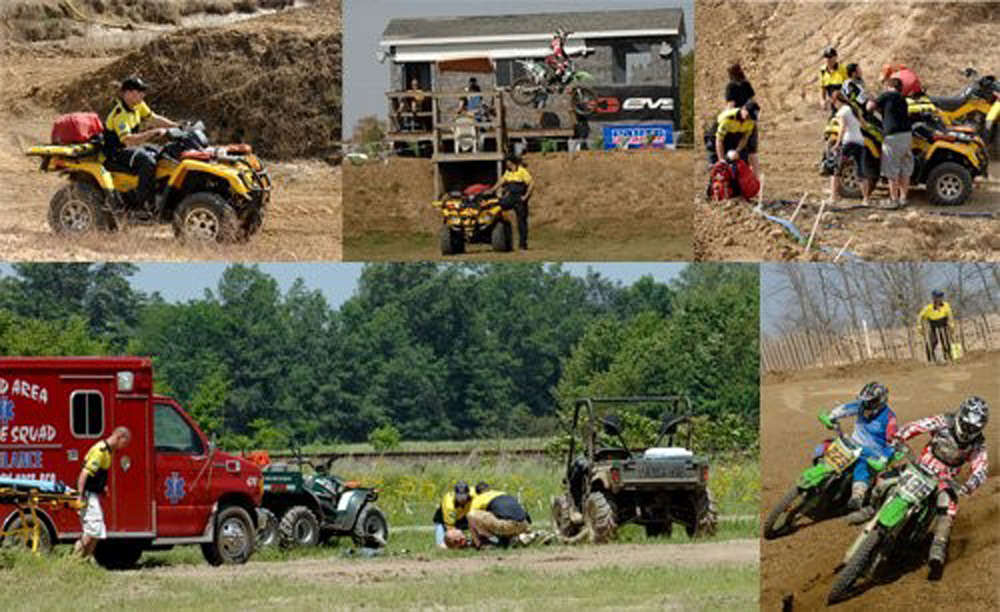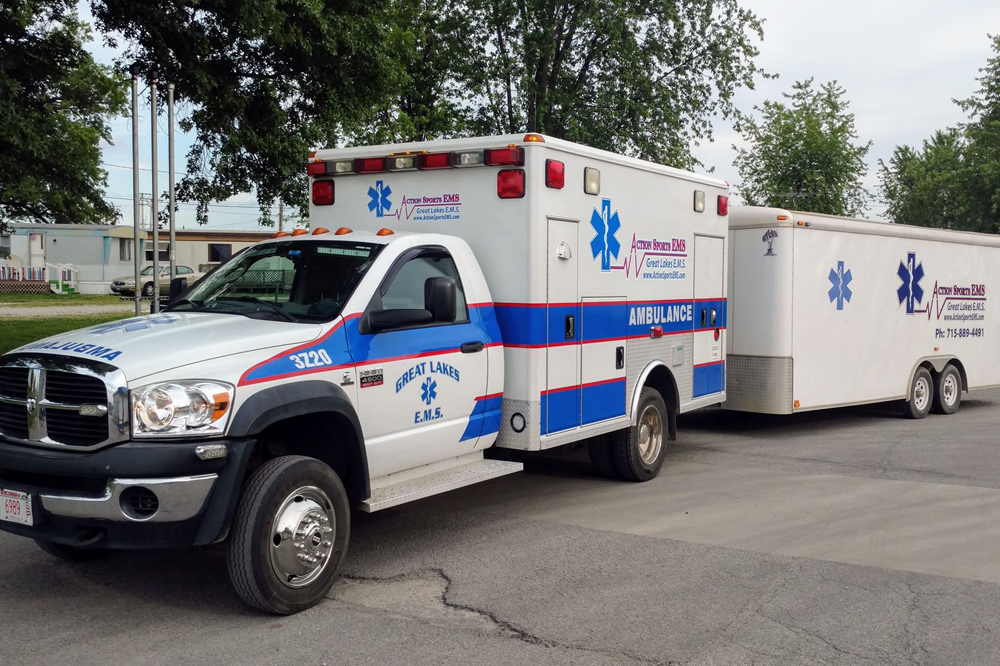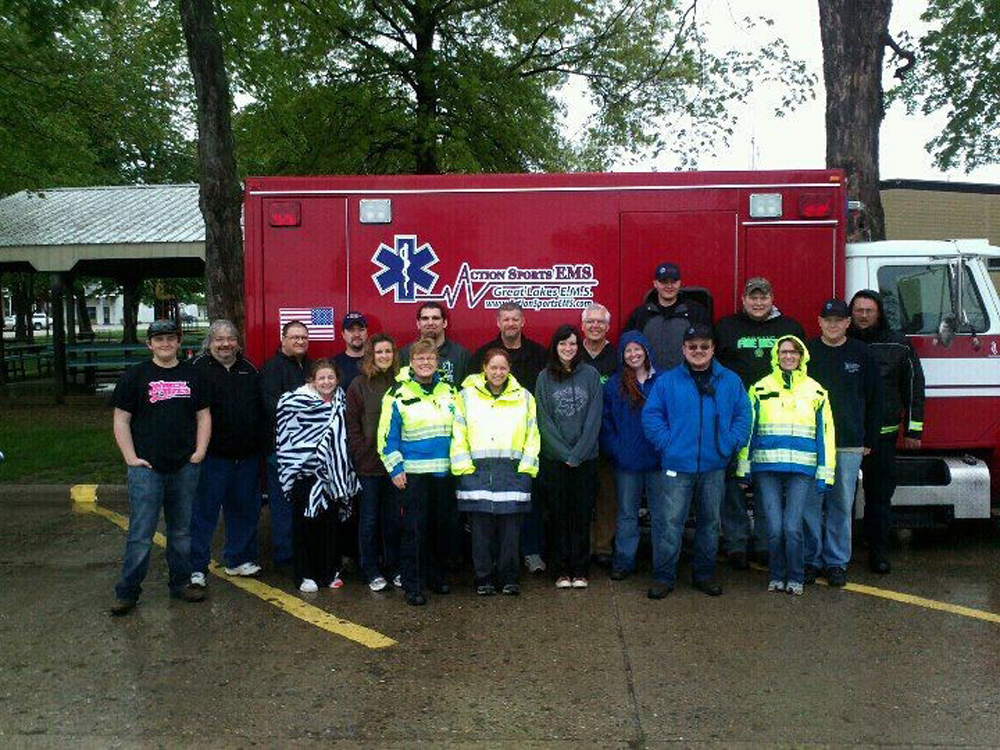Press Release | December 11, 2018
A Study Provided by Great Lakes EMS, Inc. (Action Sports EMS)
Great Lakes EMS is an ambulance service catering to the amateur motorsports world, specifically motocross and racing in the Midwestern USA. Safety and the study of rider injuries and safety gear has been their focus since 2013, and they have amassed 10 years of data that they want to share with the motorsports industry.

Great Lakes EMS says that the data they choose to share is state certified and is based off of real documented patient cases recorded in their ambulance-run data system, as required by DHS rule in every state in which they provide care. By providing this information, they hope to make safety gear better and provide manufacturers real data as proof that they are on the right track.

Here is the report Great Lakes EMS provided related to real-world neck-brace statistics pulled from their database from the last 10 years:
Neck Brace Effectiveness Statistics by Great Lakes EMS Inc (Action Sports EMS).
Introduction/Background
Action Sports EMS is an ambulance service catering to the amateur motocross industry in five states. Founded in 2008 in Northern Wisconsin we have managed to procure some of the largest motocross venues in the Midwest. Our annual coverage includes multiple area and regional Loretta Lynn qualifiers, Flat track grand nationals, ISOC, sno-cross events, and more. We work directly for the AMA providing care and transport at various events, often managing over 1000 riders in a single weekend.
Over the years we have overheard and had conversations about the positives and perceived negatives of wearing various kinds of safety gear, in particular neck braces. Regardless of make or manufacturer people seem to think they are “bad.” This perception may be based on old designs, personal experiences, social media commentary, and/or a total lack of knowledge when it comes to body mechanics.
Riders from age 6 to age 50+ have shared some horrific fallacies about neck braces, much of this information is coming from other riders during what we call “campfire talk.” More frustrating are trainers with junior riders feeding this information to parents and young riders.
We as a team feel our riders need to be educated on the mechanics of a neck brace, what it can and cannot do. Furthermore, we must dispel these myths about a product designed to help protect the cervical spine and potentially save a life. The same can be said for seatbelts and air bags many decades ago.
We feel the results of this actual patient data is proof that neck braces are providing the results intended since their creation. This is something the manufacturers of these devices have known for several years, and we hope the extensiveness of this report (and other reports like it) will finally show people real-world data. We feel the manufacturers are on the right path and the data from the study will back up their claims.
Data Collected
*Data is collected for all patient contacts per DHS rule in any state a provider is licensed.
Data in this study has been collected from January 2009 to October 2018, (nearly 10 years) and includes 9430 total patients, 8529 of which fall into the criteria pertaining to wearing (or not wearing) a neck brace, along with Cervical Spine and/or Clavicle injuries, and/or deaths recorded during this time. The other 901 pre- date the “Yes brace or No brace” question, so data from these instances was excluded. This case study strictly isolates data pertaining to these injuries, as well as accompanying factors like hospital admit, ALS transport (Advanced life-support ambulance or flight service), spinal immobilization, fatal injury and more.
Of the 8529 recorded patients, 4726 of them were toggled as “NO” which indicates neck protection was not in place at the time of injury and when the record was created. 3803 were toggled “YES” which indicates neck protection was in place at the time of injury and when the record was created.
Statistics
1. A Critical Cervical Spine injury is 89% more likely without a neck
Over the course of the 10-year study, there were 239 recorded cases of Critical Cervical Spine injuries without a neck brace, and 26 with a neck brace.

2. Death is 69%+* more likely (due to Cervical Spine Injury) without a neck brace

Over the course of the 10-year study, there were 4 recorded cases of death caused by Critical Cervical Spine injuries without a neck brace, and just 1 with a neck brace.
*It should be noted that the patient who experienced death with the neck brace had a full Cervical Spine Fusion from a previous injury, and received a blunt force (part of the motorcycle) directly to the back of the neck. Since the injury falls into our report criteria the accident is included in this report, but the circumstances are worth mentioning.
3. A Non-Critical Cervical Spine injury is 75% more likely without a neck brace.
Over the course of the 10-year study, there were 702 recorded cases of Non-Critical Cervical Spine injuries without a neck brace, and just 109 with a neck brace.

4. A Clavicle (collarbone) fracture is 45% more likely without a neck brace.
Over the course of the 10-year study, there were 443 recorded Clavicle fractures without a neck brace, and 291 with a neck brace.

5. Cervical Spine injuries sustained without a neck brace are more severe, require greater care.

As shown in the left above, of the 239 Critical Cervical Spine injuries without a neck brace (Shown in black), 100% (239) of them required a hospital admit (Yellow) and ALS transport (Orange), compared to just 73%, and 42% for neck brace wearers respectively (Right chart, same colors).
Of the 239 Critical Cervical Spine injuries without a neck brace, 87% (207) received Spinal Immobilization (Red), where as of the 26 Critical Cervical Spine injuries with a neck brace, 76% (22) were immobilized.
6. A Cervical Spine injury of any kind is 82% more likely without a neck brace.
Over the course of the 10-year study, combining all critical and non-critical Cervical Spine injuries, 945 injuries were recorded without a neck brace (20% of 4726 people), and 136 with a neck brace (3.5% of 3803 people).

Conclusion
9430 recorded accidents over nearly 10 years is a substantial sampling of real-world data pertaining to neck braces, and in every instance above neck braces are an exponential improvement in rider safety. We will continue to record this data for many years to come, and we feel with time these statistics will only continue, if not improve if more people continue to adopt this technology. While we cannot definitively rule out that the device (or any device) could potentially play a negative role during an accident, we feel it is important to mention that no device known to man is 100% effective, and that same rule applies to neck braces.
Our hope is that people see this, educate themselves on the benefits of wearing a neck brace, and make an informed decision regarding their safety when riding their motorcycle. The numbers don’t lie, and we highly recommend everyone consider wearing any protection item that can help contribute to their safety.
We are an EMS service that is simply looking out for rider safety. This is real world data collected over many years, and has in no way been manipulated to show a benefit or detriment either for, or against neck braces. Keeping you safe is our passion and it is our duty to share what we have learned while catering to the motorsports industry and to our moto-family for the good part of a decade. It should be noted that just like your bike, helmet, boots, etc, any equipment worn must be properly fitted according to manufacturer’s instructions in order to provide maximum benefit and wearability. Improperly fitted equipment can cause unexpected results, and may hinder your ability on the motorcycle, and may even lead to injury and/or death.
Quick Reference Terms
- Cervical = “neck” made up of seven vertebrae C1 – C7 Clavicle Injury = “Collarbone”
- ALS = Advanced Life Support Ambulance or Flight Service Hospital Admit = Admitted to Surgery, ICU, or Floor
- Spinal Immobilization = Long Board Cervical Collar
- Non-Critical = “Stinger” Neck Pain, Decreased range of motion. Assessment in Ambulance release signed
Source: Great Lakes EMS Inc. / Action Sports EMS – Ambulance data reporting system.
Equipment used data capture parameters in patient care worksheet : Helmet, Goggles, Boots, Knee Braces, Neck Brace, Chest Protector, Gloves, Body Armor, Bike, ATV, Motocross, Flat Track, Hill Climb, Woods.
Disclaimer:
All data contained within, and related to this report is the sole property of Great Lakes EMS, Inc., and shall not be used by any entity, company, manufacturer, or organization as a means to market and/or contribute to the sales and/or profit of goods or services without written and legal consent of Great Lakes EMS, Inc. The data contained in this report is and was strictly collected for informational and statistical purposes, and is not designed to endorse any product, service, or company, nor does the data relate to, or assume that all products designed for these types of injuries will provide any benefit(s) to the user. Great Lakes EMS, Inc. and its members, volunteers, contributors, and alike are not medical doctors, nor are they attempting to solicit medical advice in any form. Great lakes EMS, Inc highly encourages you to speak with a medical professional, and/or representative/sales agent for specific brands/manufacturers in your area should you have any questions or concerns regarding products you intend to use, as well as your health, safety, or otherwise.

More studies and information can be found at https://www.actionsportsems.com/safetystudies or www.actionsportsems.com